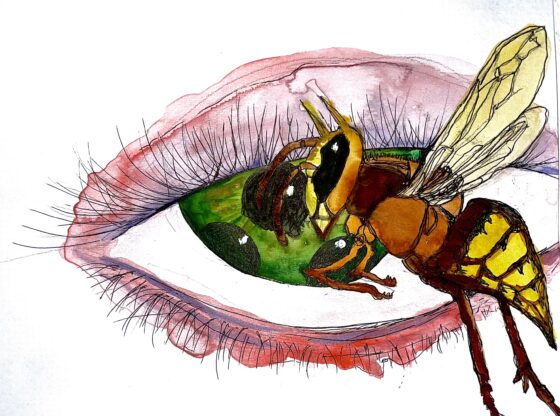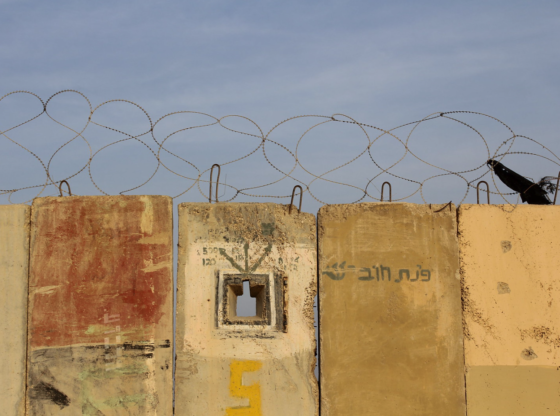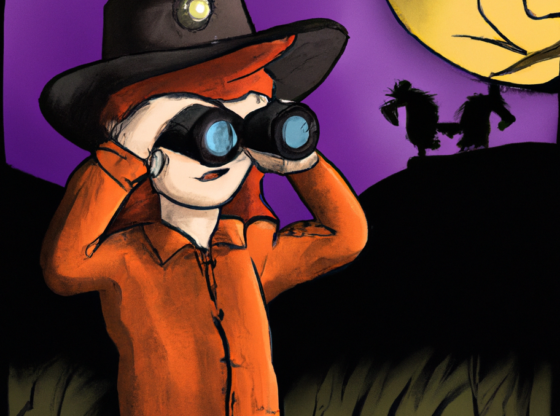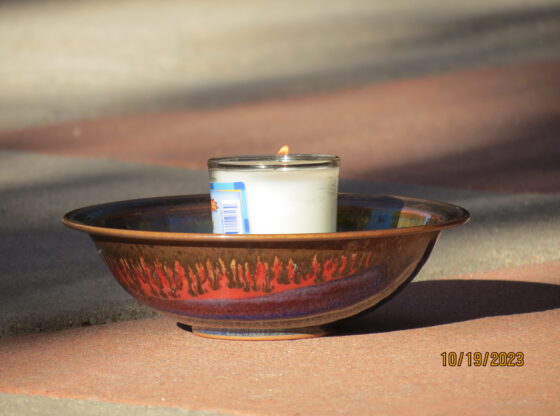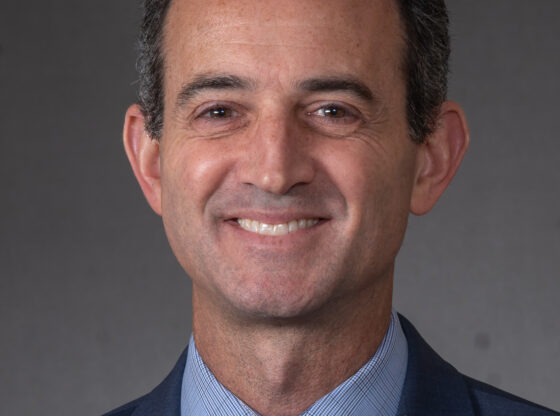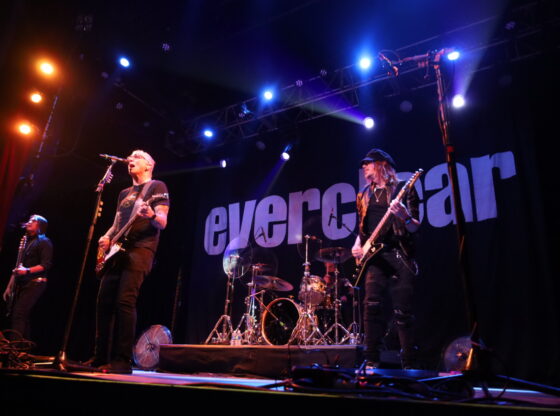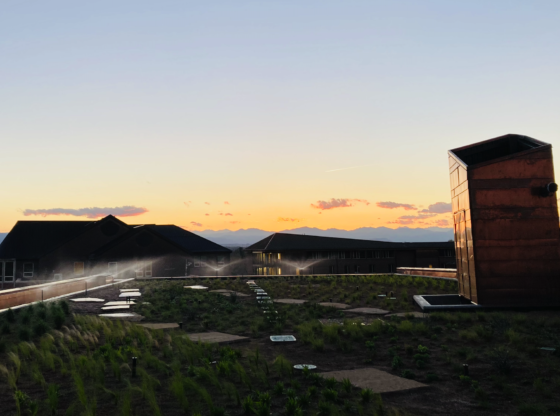What’s in a name? That which we call Daniels by any other name would still be a business school. But the history of DU resides in its buildings and the members of its community, past and present.
How many students have walked across Driscoll Bridge and wondered who Driscoll was? How many freshmen have lived in J-Mac and wondered what kind of last name Johnson-McFarlane was? (Spoiler: it was two people).
From alumni to faculty to donors, the namesakes of the buildings on DU’s campus have a lot to say about the school itself. Below are some of the most important buildings on campus and the people they represent.
This information was compiled by the staff of DU’s Special Collections and Archives and provided by University Historian Steve Fisher. For more information, students can visit the interactive Historic Campus Map on the sesquicentennial website.
Anderson Academic Commons – (1972, rededicated in 2013)
Anderson Academic Commons was formerly called Penrose Library. It was named after Spencer Penrose (1865-1939), who set up the El Pomar Foundation with his wife in 1937. The foundation donated $4.5 million for the construction of the library. Last year the library reopened as Anderson Academic Commons after extensive renovations. It was named in recognition of a lead gift from Ed Anderson, founder of a successful venture capital firm, and his wife, documentary filmmaker Linda Cabot. Anderson is also a DU alumnus and trustee.
Daniels College of Business – (1999)
The Daniels College building is named for Bill Daniels (1920-2000), who is regarded as the father of cable television. In 1952 he built the first cable system to send a broadcast signal via microwave. In 1988 he gave $11 million to DU to update the business curriculum, and in 1995 Daniels donated an additional $11 million toward the college’s building.
Daniels was born in Greeley, Colo. and before his death he created the Daniels Fund, which is the largest charitable organization in Colorado.
Driscoll Student Center – (1984)
William Driscoll (1920-1983) taught zoology at DU from 1944-48, then left to earn a Ph.D at the University of California, Berkeley. He returned to DU in 1951 and resumed teaching until 1968, when he became associate dean of the College of Arts and Sciences.
He continued to teach part time until his death. Driscoll won the DU Outstanding Faculty Award in 1961, and shortly before his death received the Evans Award. Driscoll Student Center serves as DU’s student union. According to Fisher, Helen Driscoll will make an appearance on campus during Founders Week at an event to honor her late husband.
Evans Chapel – (1878, relocated in 1960)
DU founder John Evans built the Evans Memorial Chapel in memory of his daughter Josephine Evans, who died of consumption in 1868 at age 24. Originally located at 13th and Bannock streets in downtown Denver, the chapel was moved to campus when it was threatened with demolition. It was designated a national historic site in 1988.
Johnson-McFarlane Hall – (1957)
Better known as “J-Mac,” Johnson-McFarlane Hall is named after two popular faculty members from an earlier era: Granville “Granny” Johnson (1897-1956) and Ida McFarlane (1873-1940).
Johnson earned a BA and MA in physical education from DU in 1923 and 1925. He coached the Pioneers wrestling team and taught physical education at DU until his death. At that time, Johnson was the university’s longest serving faculty member.
McFarlane taught English at DU for 33 years until her death. She also led a volunteer-driven effort to do an extensive restoration of the Central City Opera House in 1932.
Margery Reed Hall – (1928)
The daughter of Verner and Mary Reed, Margery Reed (1894-1925) graduated from DU in 1919 with a BA in English. That year she took a position as an assistant professor of English at DU and there met her future husband, Paul Mayo, who also taught English. In 1924 both traveled to Peru, where Paul joined the diplomatic service. Margery became ill in Peru and returned to the U.S., where she died at age 31. Her mother, Mary Reed, donated $100,000 toward construction of Margery Reed Mayo Hall, later shortened to Margery Reed Hall. The longtime home of the theater department currently is undergoing extensive renovation.
Mary Reed Building – (1932)
In 1893, Verner and Mary Reed moved to Colorado Springs, where Verner made his fortune in mining, banking, ranching and irrigation. Following Verner’s death in 1919, Mary (1875-1945) became involved in charitable and philanthropic projects, including the Denver Community Chest. Shortly after her gift to construct Margery Reed Hall in her daughter’s memory, she presented DU with $350,000 in cash and an additional $180,000 trust fund income to erect a new library that would bear her name. In 1972, the building was decommissioned as a library and today houses the university’s administrative offices.
Nagel Hall – (2008)
Nagel Hall, DU’s newest residence hall, cost $40 million to build. Trustee Ralph Nagel and his wife Trish contributed $4 million to spearhead the project. Ralph, a former architect and past chair of the Colorado Commission on Higher Education, founded and operated Meridian Retirement Communities. He sold them in 2005 and currently is president of Top Rock, an investment company. Trish is an attorney with Moye White. She and her husband are long-time activists in Colorado politics, having donated extensively to state and national Republican candidates, including former Colorado Governor Bill Owens.
Boettcher Center – (1963)
The Boettcher Center is named for the Colorado-based Boettcher Foundation, which was incorporated in 1937 by Charles Boettcher and his son Claude. The Boettcher Center opened as the Boettcher Center for Science, Engineering and Research. Since its inception, the Boettcher Foundation has given out more than $200 million dollars, including more than $15 million in philanthropic gifts to DU.
Nelson Hall – (2002)
This residence hall is named for alumni Lee and Shirley Nelson. Lee came to DU to play football and baseball, where he met Shirley. After graduation, Lee worked for Johns Manville for 12 years and then started his own business, Nelson Pipeline Constructors. His company flourished, landing large projects including Denver International Airport. The Nelsons contributed $2 million toward construction of the hall, which houses 430 students. Shirley died in 2003.
Newman Center for the Performing Arts – (2002)
The Newman Center is named for Robert and Judi Newman, who donated an undisclosed sum for construction of the building, which houses the Lamont School of Music and several public performance spaces. Former Chancellor Daniel L. Ritchie asked the Newmans to spearhead the fundraising effort for the building. Robert is on the board of the Denver Center for the Performing Arts and Judi is on the Symphony board. Robert is also a co-founder of J.D. Edwards and currently runs a venture capital company called Greenwood Gulch Ventures.
Olin Hall – (1997)
Olin Hall is named for the F.W. Olin Foundation of New York, established in 1938 by Franklin W. Olin, an engineer. In 1892 he founded a powder manufacturing company that grew to include small-arms ammunition and commercial explosives. Olin died in 1951. His foundation gave $7 million dollars toward DU’s building, constructed to house the biology department and science labs.
Ricketson Law Building – (2003)
Home of the Sturm College of Law, the Ricketson Law Building is named for Frank Ricketson Jr. (1896-1987), grandfather of outgoing DU Law Dean Mary Ricketson. A 1919 alumnus of the Westminster College of Law, which later merged with the DU law school, Ricketson served on DU’s Board of Trustees from 1944-72. He was president of Fox Intermountain Theaters and also served as president of the Central City Opera for 26 years. Ricketson’s estate gave $12 million toward the building.
Ritchie Center for Sports & Wellness – (1999)
Named for Chancellor Emeritus and Board of Trustees Chair Daniel L. Ritchie, the Ritchie Center includes a natatorium, two ice arenas, a fitness center and other athletics amenities. Ritchie’s involvement with DU began when he became a trustee in 1983. He served as DU’s chancellor from 1989-2005. To kick-start the university’s economic rejuvenation in the 1990s, Ritchie gave DU a gift of over $50 million.
Shwayder Art Building – (1978)
The Shwayder Art Building is named for the Jesse and Nellie Shwayder Foundation, which donated $1.7 million in stock toward the building project. Jesse Shwayder founded the Shwayder Trunk Manufacturing Co. in Denver just after the turn of the 20th century, and it grew into the Samsonite Luggage Corp.
Sturm Hall – (1960’s, rededicated in 2000)
Donald and Susan Sturm gave $5 million to renovate the former Business Administration Building and adjoining General Classroom Building. Constructed in the late 1960s, the building was rededicated in 2000 and now houses classrooms and offices for faculty in the arts, humanities and social sciences. Donald is a member of DU’s Board of Trustees. In 2004, the Sturms gave $20 million to DU’s law school, which was named in Donald’s honor.



